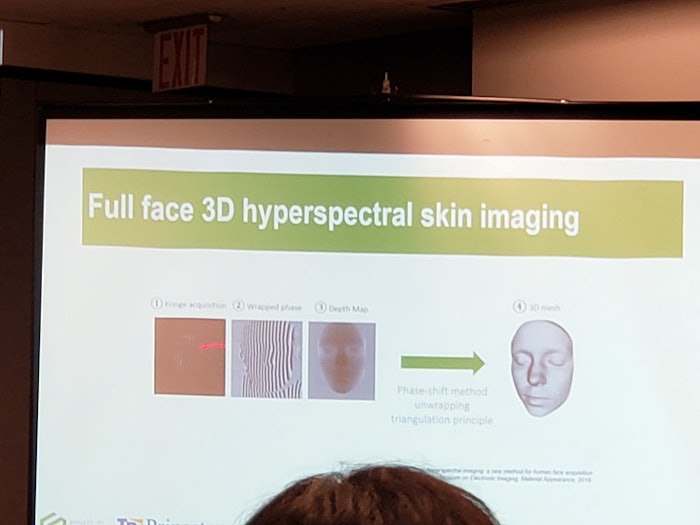
The 1% cut-off in ingredient ingredient disclosures, the oxidative stability of natural fatty acids and three-dimensional techniques to image skin were among the topics discussed during the SCC's continuing education program (CEP), held one day in advance of the 2019 NYSCC Suppliers' Day.
Formulating Basics
Turning back to the basics, Perry Romanowski, vice president of Element 44 Inc., led attendees through the fundamentals of formulating including ideation, development and commercialization. For the development step, he led an exercise to see if attendees could identify the "1% cut-off" in ingredient disclosures for those added for a function versus marketing claim.
He also shared how to generate and find starting prototype formulas. "Patents often disclose great starting formulas," said Romanowski, "and many outline percentages and the amounts of ingredients used. These can be a great starting point."
He added that online directories including the Cosmetics & Toiletries Bench Reference, printed formularies as well as supplier formulas are good starting points—"But you have to remember suppliers' formulas are put together with the intent to get you to use a supplier's ingredient, so these are not optimized and they don't tell you the minimal concentration of their ingredient to use," he cautioned.
Romanowski also shared tips for reverse-engineering a formulation, assessing whether a supplier's ingredient has a perceivable effect in a product, and sampling more expensive ingredients in prototype formulas. "I like to try to formulating new ideas by testing out [extreme scenarios]," he said. "For example, if I had twice as much budget to spend, what would I do to make the formula better, or how could I formulate the product on just half of the budget."
Plant Fats
Benjamin Schwartz of AAK, and formerly a lab technician for The Estée Lauder Companies, presented a course on the roles of plant-based lipids in personal care. He focused on how the structure of fatty acids in plant-based lipids, especially the triglycerides and wax esters that contain them, determine the properties of oxidative stability, compatibility, solid fat content and crystallization types of various oils, fats and waxes. In addition, he reviewed some of the literature describing the potential therapeutic benefits of different components of plant-based oils and fats.
Skin Metrics
The Skin Measurement Workshop, co-hosted by the SCC and TRI-Princeton, opened with a look at skin moisture principles and barrier function measurements. Paul Cornwell, Ph.D., gave the first lecture and served as moderator. Additional topics discussed skin surface moisture imaging, spectroscopy measurements, submicron IR spectroscopy and new developments in skin imaging analysis.
Rounding out the session, Matthieu Jomier, of Newtone, explored both two- and three-dimensional skin imaging techniques to measure characteristics including porphyrins, to detect the onset of acne; hydration color mapping; artificial intelligence to assist with skin imaging; full face three-dimensional hyperspectral skin imaging and others.
He concluded:
- "Skin imaging allows objective evaluation and a correlation with consumer visual perception";
- "Two-dimensional or three-dimensional acquisition solutions associated with image processing and analysis can be very useful for skin evaluation"; and
- "Innovative solutions can improve skin evaluation, such as:
- Macro imaging systems with two- and three-dimensional skin analysis;
- Artificial intelligence applied for skin evaluation; and
- Three-dimensional hyperspectral imaging."
To see the full calendar of CEP courses, visit the SCC website.










